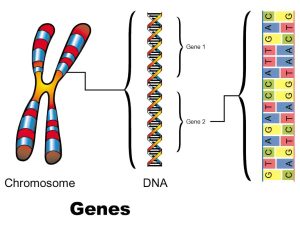Features of a Modifiable Gene
Gene
A gene is a portion of deoxyribonucleic acid (DNA) inside every cell of an organism, which carries genetic codes necessary for assembling proteins. Genes are what control almost everything about an organism, both physical characteristics as well as other unseen characteristics, such as a person’s reaction to allergens.
The ability to modify genes allows scientists to create a specialized version of an organism by manipulating, changing, deleting, or adjusting their genes. This is a process called genetic modification.
How Gene Modification Works
The first step in gene modification is selecting a gene of interest. It is then transferred to a cell, typically, through one of two methods: 1) being fired from what is called a “gene gun” into the cell, or 2) being inserted into a specialized piece of DNA in bacteria that is capable of transferring the gene information to the organism. This gene is then incorporated into its DNA.
Features of Modifiable Genes
Presence of Regulatory Elements
Modifiable genes must have regulatory elements, such as promoters, enhancers, and silencers. These regions control when, where, and how much a gene is expressed. By targeting these elements, scientists can either upregulate or downregulate gene activity.
Open Reading Frame (ORF)
The open reading frame encodes the actual protein. Targeting this area with mutations (insertions, deletions, and point mutations) allows researchers to either alter a protein’s function or stop its production altogether.
Responsive to Editing Tools
Researchers use tools such as the CRISPR-Cas9, TALENs, or ZFNs to modify genes. It is important that genes can be targeted by these tools and respond to them in order to be modified. Specific sequences are needed for effective modification, such as PAM sites for CRISPR tools.
Transcription Factor Binding Sites
Transcription factor binding sites allow for external control via synthetic or natural transcription factors. This is useful in gene therapy and synthetic biology.
Integration Compatibility
Some genes are located in regions that allow for safe integration of new genetic material. New genetic material can be integrated into “safe harbor” loci areas such as AAVS1.
Functional Consequence of Modification
Modifiable genes often have phenotypic effects when they are altered, which makes them useful for research and/or therapeutic purposes.

